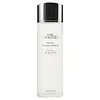What's inside
What's inside
 Key Ingredients
Key Ingredients

 Benefits
Benefits

 Concerns
Concerns

No concerns
 Ingredients Side-by-side
Ingredients Side-by-side

Saccharomyces Ferment Filtrate
HumectantBifida Ferment Lysate
Skin ConditioningWater
Skin ConditioningDiethoxyethyl Succinate
SolventNiacinamide
SmoothingHordeum Vulgare Extract
EmollientCassia Alata Leaf Extract
AstringentGlycerin
HumectantDipropylene Glycol
HumectantDimethicone
EmollientPolyquaternium-51
Skin Conditioning1,2-Hexanediol
Skin ConditioningAdenosine
Skin ConditioningLecithin
EmollientLactic Acid
BufferingAcetic Acid
BufferingPhenoxyethanol
PreservativePotassium Sorbate
PreservativeSaccharomyces Ferment Filtrate, Bifida Ferment Lysate, Water, Diethoxyethyl Succinate, Niacinamide, Hordeum Vulgare Extract, Cassia Alata Leaf Extract, Glycerin, Dipropylene Glycol, Dimethicone, Polyquaternium-51, 1,2-Hexanediol, Adenosine, Lecithin, Lactic Acid, Acetic Acid, Phenoxyethanol, Potassium Sorbate
Water
Skin ConditioningPropanediol
SolventHexyldecyl Myristoyl Methylaminopropionate
EmollientIsostearyl Neopentanoate
EmollientGlycerin
HumectantMethyl Trimethicone
Skin ConditioningSea Water
HumectantSaccharide Isomerate
HumectantDimethicone
EmollientPolyacrylate Crosspolymer-6
Emulsion StabilisingTromethamine
BufferingDimethicone/Vinyl Dimethicone Crosspolymer
Skin ConditioningButylene Glycol
HumectantGlyceryl Caprylate
EmollientCarbomer
Emulsion StabilisingAcrylates/C10-30 Alkyl Acrylate Crosspolymer
Emulsion StabilisingDisodium EDTA
Ethylhexylglycerin
Skin Conditioning1,2-Hexanediol
Skin ConditioningParfum
MaskingChenopodium Quinoa Seed Extract
Skin ConditioningMagnesium Sulfate
Calcium Chloride
AstringentPhenoxyethanol
PreservativeSodium Citrate
BufferingCitric Acid
BufferingT-Butyl Alcohol
PerfumingBeta Vulgaris Root Extract
Skin ConditioningManganese Sulfate
Skin ConditioningZinc Sulfate
AntimicrobialBrassica Oleracea Acephala Leaf Extract
HumectantLecithin
EmollientNasturtium Officinale Extract
PerfumingTocopherol
AntioxidantLepidium Sativum Sprout Extract
Skin ConditioningAscorbyl Glucoside
AntioxidantWater, Propanediol, Hexyldecyl Myristoyl Methylaminopropionate, Isostearyl Neopentanoate, Glycerin, Methyl Trimethicone, Sea Water, Saccharide Isomerate, Dimethicone, Polyacrylate Crosspolymer-6, Tromethamine, Dimethicone/Vinyl Dimethicone Crosspolymer, Butylene Glycol, Glyceryl Caprylate, Carbomer, Acrylates/C10-30 Alkyl Acrylate Crosspolymer, Disodium EDTA, Ethylhexylglycerin, 1,2-Hexanediol, Parfum, Chenopodium Quinoa Seed Extract, Magnesium Sulfate, Calcium Chloride, Phenoxyethanol, Sodium Citrate, Citric Acid, T-Butyl Alcohol, Beta Vulgaris Root Extract, Manganese Sulfate, Zinc Sulfate, Brassica Oleracea Acephala Leaf Extract, Lecithin, Nasturtium Officinale Extract, Tocopherol, Lepidium Sativum Sprout Extract, Ascorbyl Glucoside
 Reviews
Reviews

Ingredients Explained
These ingredients are found in both products.
Ingredients higher up in an ingredient list are typically present in a larger amount.
1,2-Hexanediol is a synthetic liquid and another multi-functional powerhouse.
It is a:
- Humectant, drawing moisture into the skin
- Emollient, helping to soften skin
- Solvent, dispersing and stabilizing formulas
- Preservative booster, enhancing the antimicrobial activity of other preservatives
Dimethicone is a type of synthetic silicone created from natural materials such as quartz.
What it does:
Dimethicone comes in different viscosities:
Depending on the viscosity, dimethicone has different properties.
Ingredients lists don't always show which type is used, so we recommend reaching out to the brand if you have questions about the viscosity.
This ingredient is unlikely to cause irritation because it does not get absorbed into skin. However, people with silicone allergies should be careful about using this ingredient.
Note: Dimethicone may contribute to pilling. This is because it is not oil or water soluble, so pilling may occur when layered with products. When mixed with heavy oils in a formula, the outcome is also quite greasy.
Learn more about DimethiconeGlycerin is already naturally found in your skin. It helps moisturize and protect your skin.
A study from 2016 found glycerin to be more effective as a humectant than AHAs and hyaluronic acid.
As a humectant, it helps the skin stay hydrated by pulling moisture to your skin. The low molecular weight of glycerin allows it to pull moisture into the deeper layers of your skin.
Hydrated skin improves your skin barrier; Your skin barrier helps protect against irritants and bacteria.
Glycerin has also been found to have antimicrobial and antiviral properties. Due to these properties, glycerin is often used in wound and burn treatments.
In cosmetics, glycerin is usually derived from plants such as soybean or palm. However, it can also be sourced from animals, such as tallow or animal fat.
This ingredient is organic, colorless, odorless, and non-toxic.
Glycerin is the name for this ingredient in American English. British English uses Glycerol/Glycerine.
Learn more about GlycerinLecithin is a term for a group of substances found in the cell membranes of plants, animals, and humans. They are made up of mixture of phospholipids.
This ingredient has emollient and emulsifying properties.
As an emollient, lecithen helps soften the skin and creates a barrier to keep moisture in.
As an emulsifier, it also helps prevent water and oil ingredients from separating. Lecithin can also help ingredients be better absorbed by the skin.
This is because the phospholipids in lecithin produce liposomes. Liposomes help other ingredients get through the skin barrier.
Depending on the source of this ingredient, lecithin may not be fungal acne safe. This is because some sources of lecithin come from soybean oil, which may feed the malassezia yeast that feeds fungal acne.
We recommend reaching out to the brand you are purchasing from to inquire about the source of their lecithin.
Some other names for this ingredient include soy lecithin and deoiled soy lecithin.
Learn more about LecithinPhenoxyethanol is a preservative that has germicide, antimicrobial, and aromatic properties. Studies show that phenoxyethanol can prevent microbial growth. By itself, it has a scent that is similar to that of a rose.
It's often used in formulations along with Caprylyl Glycol to preserve the shelf life of products.
Water. It's the most common cosmetic ingredient of all. You'll usually see it at the top of ingredient lists, meaning that it makes up the largest part of the product.
So why is it so popular? Water most often acts as a solvent - this means that it helps dissolve other ingredients into the formulation.
You'll also recognize water as that liquid we all need to stay alive. If you see this, drink a glass of water. Stay hydrated!
Learn more about Water